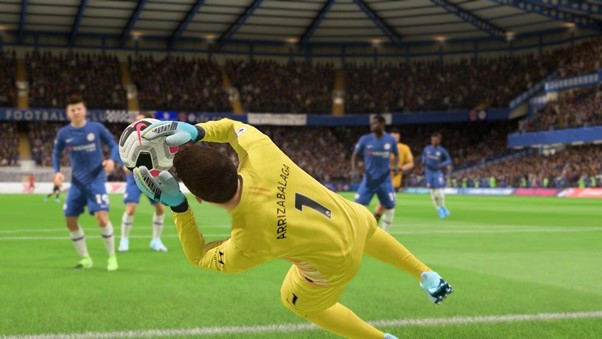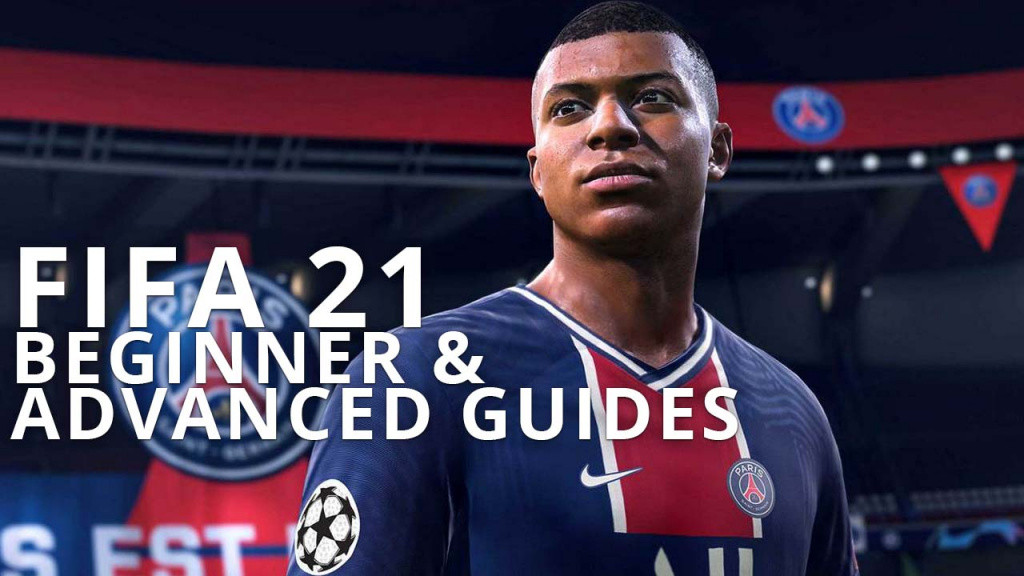Goalkeepers don’t often get the recognition they deserve. But in FIFA 21, they’re kind of a big deal, and they’re even better when you learn how to control them. It makes sense to do so considering you’ll have to control them anytime they make a save or take a goal kick.
But it goes deeper than that. There will be times where you’ll need to use the more complex controls such as covering the far post on a corner, or even switching to the goalkeeper and controlling them manually in a one-on-one.
Here’s a list of all the goalkeeper controls for both Playstation and Xbox.
| Action | Playstation | Xbox |
| Drop Kick | ◯ or ▢ | B or X |
| Throw/Pass | X | A |
| Drop Ball | △ | Y |
| Pick Up Ball | R1 | RB |
| Driven Throw | R1 + X | RB + A |
| Driven Kick | R1 + ▢ | RB + X |
| Move Goalkeeper | Hold R3 + R in any direction | Hold RS + R in any direction |
| Cover Far Post | Hold R3 | Hold RS |
| Switch To Goalkeeper | TouchPad Button | View Button |
Kicking, passing, and throwing are easy enough. You’ll often want to look for the short option, and a quick roll or throw is the best way to achieve that. Other times, you’ll want to aim somewhere in the middle, and a kick or a throw will make that possible.
But if you’re going to add more power and drive to a kick or a throw, don’t forget to use their driven variants. These are particularly good when launching a quick counter-attack.
Dropping the ball is also a high-risk, high-reward play. If you’re able to avoid getting tackled, you’ll be able to draw attackers forward and create openings elsewhere in the pitch. It has a kind of domino effect, whereby one opening makes another, and so on.
If you want to, you can take the keeper out and go for a run. But it’s a much safer bet to look for an option to pass to at the right time and release the ball accordingly.
Using the controls in FIFA 21 to move the goalkeeper is handy in situations where you want to place them in a particular position or move them back onto the line. But switching to the goalkeeper and controlling them manually is even better, especially against skilled opponents.
(c) EA Sports
Not only will manually controlling the goalkeeper allow you to position yourself in the best possible place ahead of and during an attack. But it will make it possible for you to save the ball with more precision.
For example, you might face an opponent who seems to aim all their shorts into a specific corner, and by switching to the goalkeeper and controlling them manually, you can increase your chances of preventing a goal.
It might sound complicated, but it’s quite simple. All you need to do is move the goalkeeper around with the left analog stick, and dive by holding the right analog stick in the intended direction at the right time.
You might also yourself in the unfortunate situation of facing a one-on-one, particularly against a striker with five-star-skills. If you’ve exhausted all other options, it can’t hurt to switch to the goalkeeper and make one final risk to stop the opponent from scoring.
Generally, the AI does a pretty good of doing it for you. But it’s far from perfect, and you’ll often be able to do a lot better yourself. Just don’t forget to switch back to your players afterwards.
If you want to master goalkeeping in FIFA 21, you’ll want to use all the different controls made available to you. You’ll end up using some more than others, but it makes sense not to limit your options. Otherwise, you might find yourself conceding a goal that could have been prevented, or you might fail to make a counter-attack that could have been done relatively easily.
For all the tutorials about FIFA 21, visit our Beginners and Advanced guides:

 No ads, our video library,
No ads, our video library,



